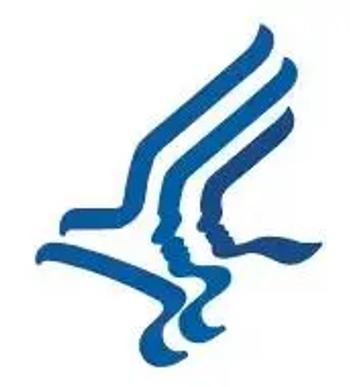
- December 2016
- Volume 1
- Issue 2
Antimicrobial Stewardship and Telehealth for Critical Access and Regional Hospitals

The reality of increasing antimicrobial resistance in the United States has been looming within healthcare facilities over the past two decades. Twenty percent to 50% of all antimicrobial prescribing in acute care hospitals is deemed “inappropriate,” and new antimicrobial development has slowed and even stopped at times, thus making the need to protect this valuable resource crucial to modern medicine.
1,2
Formalized antimicrobial stewardship programs (ASPs) are gaining momentum through the publication of national guidelines, a summary of program elements available from the Centers for Disease Control and Prevention (CDC), and guidance from national advisory councils and the President on actions to combat antimicrobial resistance.
1-5
The National Action Plan for Combating Antibiotic-Resistant Bacteria proposed the goal of implementation of ASPs in all acute care hospitals by 2020, with the goal of a 20% reduction in inappropriate inpatient use of antimicrobials. This goal will be addressed through the incorporation of antimicrobial stewardship practices into Centers for Medicare & Medicaid Services conditions of participation and a Joint Commission accreditation standard.
5,6
The most recent data (2014) regarding ASP implementation indicate that 39% of hospitals have ASPs compliant with all seven of the CDC’s core elements, with compliance declining sharply in facilities with <200 inpatient beds.
7
Given the above estimates of current ASP implementation and the scope of practice and regulatory change projected by 2020, it is crucial that smaller community and critical access hospitals are not left behind with regard to antimicrobial stewardship. These smaller facilities may encounter a number of perceived barriers to implementation of formal ASPs. Specifically, many lack the presence of an on-site infectious diseases (ID) physician and are unlikely to have direct access to an ID-trained pharmacist.
A survey of US hospitals revealed that facilities with <50 beds were less likely to report having the support of their hospital leadership to develop an ASP or having received education regarding antimicrobial stewardship.
7
One Australian study identified that the most commonly encountered barriers to ASP implementation included lack of access to ID physicians and/or training, lack of leadership, lack of willingness to change, and lack of senior clinician support.
8
Increasing access to ID specialists and other resources through telehealth may overcome many of these barriers and present an opportunity for improvement in antimicrobial stewardship at these smaller care settings.
Documented experience with antimicrobial stewardship via telehealth or teleconferencing is somewhat limited, but available literature lends promise to the concept. Providence St. Mary Medical Center in Walla Walla, Washington, implemented a comprehensive ASP that consisted of a robust, on-site antimicrobial stewardship team and a contracted physician at a remote site who provided weekly input on prospective chart audits performed by the ASP pharmacist via teleconferencing.
9
This program found that after 13 months of operation, the number of ASP interventions increased from 2.1 to 6.8 per week. They also reported a large increase in the rate of de-escalation, a 28% decrease in antibiotic expenditure, and a decrease in the rate of hospital-onset C. difficile infection.
9
Another approach is that of Vidant Medical Center in Greenville, North Carolina.
10
This facility utilized a healthsystem—wide electronic medical record to provide offsite prospective chart audits performed by a pharmacist with ID training and the oversight of an ID physician to six community hospitals within the same overall health system. This approach yielded an intervention acceptance rate of 83% to 88% and reduced fluoroquinolone use at two of the four larger remote hospitals.
10
In Alaska, the limited road access and shear number of critical access hospitals make the setting a prime example of where telemedicine may increase antimicrobial stewardship access to remote facilities. The Alaska Antimicrobial Stewardship Collaborative uses a telehealth structure to provide critical access hospitals access to an ID physician through twice-weekly conference calls. During these calls, the ID physician provides oversight to local ASP staff performing prospective chart audits. The goals of this program are to increase state-wide access to ID specialists, enhance local ASP audits, optimize antimicrobial therapy, and increase ID training and education in rural Alaska.
11
With the changing scope of ASPs in the United States, smaller sites will need to tailor antimicrobial stewardship practices to their facility using alternative techniques and resources. Telemedicine is likely to play a key role in this process. Although telehealth staff are acceptable members of a facility’s ASP team, it is crucial that local stakeholders take responsibility for some aspects of the ASP. Open lines of communication between telehealth and local ASP staff are necessary to promote identification of opportunities for improvement within the ASP and, moreover, assure that antimicrobial therapy is consistently and accurately optimized on the patient level. Continual program assessment and adjustment will be necessary as telehealth is further integrated into ASP models.
Ryan Stevens, PharmD, BCPS, graduated with a doctor of pharmacy from the University of Montana in 2010. After completing a PGY1 pharmacy practice residency at Alaska Native Medical Center in Anchorage, Alaska, he received his board certification in pharmacotherapy in 2012. In 2013, he developed and implemented a comprehensive antimicrobial stewardship program at Providence Alaska Medical Center, where he is currently employed as the infectious diseases clinical pharmacy specialist.
REFERENCES
1. Pollack LA, Srinivasan A. Core elements of hospital antibiotic stewardship programs from the Centers for Disease Control and Prevention. Clin Infect Dis. 2014;59(suppl 3):S97-S100. doi: 10.1093/cid/ciu542.
2. Dellit TH, Owens RC, McGowan JE, et al; Infectious Diseases Society of America; Society for Healthcare Epidemiology of America. Infectious Diseases Society of American and the Society for Healthcare Epidemiology of American Guidelines for developing an institutional program to enhance antimicrobial stewardship. Clin Infect Dis. 2007;44(2):159-177.
3. Barlam TF, Cosgrove SE, Abbo LM, et al. Implementing an antibiotic stewardship program: guidelines by the Infectious Diseases Society of America and the Society for Healthcare Epidemiology of America. Clin Infect Dis. 2016;62(10):e51-377. doi: 10.1093/cid/ciw118.
4. President’s Council of Advisors on Science and Technology. Report to the President on combating antibiotic resistance. The White House website. www.whitehouse.gov/sites/default/files/microsites/ostp/PCAST/pcast_carb_report_sept2014.pdf. Published September 18, 2014. Accessed October 4, 2016.
5. National action plan for combating antibiotic-resistant bacteria. The White House website. www.whitehouse.gov/sites/default/files/docs/national_action_plan_for_combating_antibotic-resistant_bacteria.pdf. Published March 1, 2015. Accessed October 4, 2016.
6. Approved: new antimicrobial stewardship standard. The Joint Commission website. www.jointcommission.org/assets/1/6/New_Antimicrobial_Stewardship_Standard.pdf. Published July 2016. Accessed October 4, 2016.
7. Pollack LA, van Santen KL, Weiner LM, Dudeck MA, Edwards JR, Srinivasan A. Antibiotic stewardship programs in U.S. acute care hospitals: findings from the 2014 national healthcare safety network annual hospital survey. Clin Infect Dis. 2016;63(4):443-449. doi: 10.1093/cid/ciw323.
8. James R, Luu S, Avent M, Marshall C, Thursky K, Kirsty Buising. A mixed methods study of the barriers and enablers in implementing antimicrobial stewardship programmes in Australian regional and rural hospitals. J Antimicrob Chemother. 2015;70(9):2665-2670. doi: 10.1093/jac/dkv159.
9. Yam P, Fales D, Jemison J, Gillum M, Bernstein M. Implementation of an antimicrobial stewardship program in a rural hospital. Am J Health Syst Pharm. 2012;69(13):1142-1148. doi: 10.2146/ajhp110512.
10. Wood ZH, Nicolsen NC, Allen N, Cook PP. Remote antimicrobial stewardship in community hospitals. Antibiotics (Basel). 2015;4(4):605-616. doi: 10.3390/antibiotics4040605.
11. Infectious disease specialist access pilot project. Alaska State Hospital and Nursing Home Association website. www.ashnha.com/antimicrobial-stewardship/idsapp/. Accessed October 4, 2016.
Articles in this issue
almost 9 years ago
Why Is TB Still Such a Big Threat in the United States?almost 9 years ago
Epclusa: What Have We Learned?almost 9 years ago
What Issues Are We Still Facing with Curing HIV?almost 9 years ago
Innovation Is the Key to a Healthy Futurealmost 9 years ago
Guideline Updates for Infective Endocarditis, HAP, and VAPNewsletter
Stay ahead of emerging infectious disease threats with expert insights and breaking research. Subscribe now to get updates delivered straight to your inbox.






















































































































































































































































































